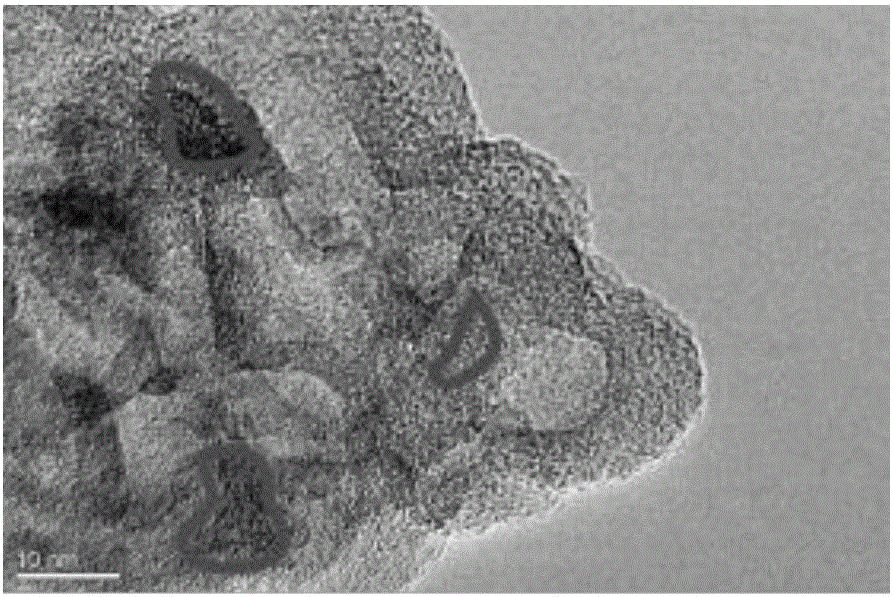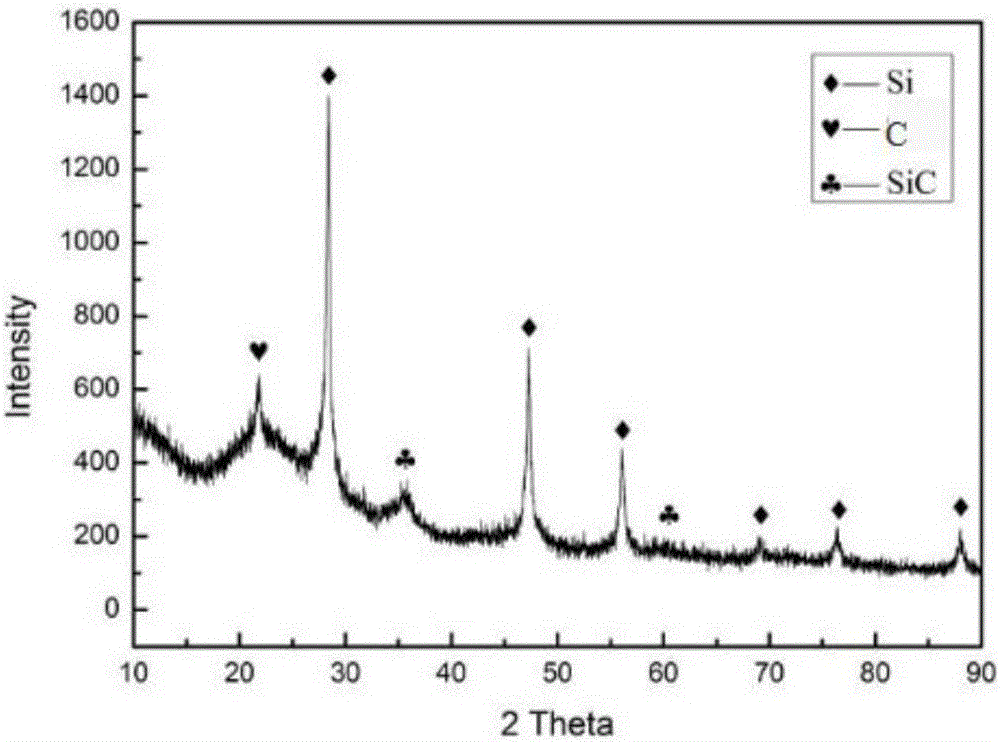Method for preparing lithium battery silicon carbon anode material by utilizing magnesiothermic reduction
A lithium-ion battery, negative electrode material technology, applied in battery electrodes, nanotechnology for materials and surface science, secondary batteries, etc., can solve the problems of limited output, high production cost, explosion hazard, etc., to prevent reunion for a long time Large, low cost, simple process effect
- Summary
- Abstract
- Description
- Claims
- Application Information
AI Technical Summary
Problems solved by technology
Method used
Image
Examples
Embodiment Construction
[0015] Add 1.25g of sodium silicate, 3.75g of glucose, and 16.75g of sodium chloride into 225ml of deionized water for mixing, vigorously stir for 4h, and then dry at 80°C for 12h. Subsequently, the dried precursor was calcined at 650° C. for 2 h in an argon-protected environment to obtain a sodium silicate / carbon composite material. Using the principle of strong acid to make weak acid, a certain amount of hydrochloric acid is added to obtain silicic acid / carbon composite material. Then, dry at 170° C. for 5 hours, and wash with water to obtain a silica / porous carbon composite structure. The composite material and the magnesium powder are mixed at a mass ratio of 1:0.8, and then sodium chloride with a mass ratio of 1:10 to the composite material is added. The three were evenly mixed and placed in a tube furnace, the temperature was raised to 700°C at a heating rate of 5°C / min and kept for 3 hours, and the magnesothermic reduction reaction was carried out under the protection ...
PUM
 Login to View More
Login to View More Abstract
Description
Claims
Application Information
 Login to View More
Login to View More - R&D
- Intellectual Property
- Life Sciences
- Materials
- Tech Scout
- Unparalleled Data Quality
- Higher Quality Content
- 60% Fewer Hallucinations
Browse by: Latest US Patents, China's latest patents, Technical Efficacy Thesaurus, Application Domain, Technology Topic, Popular Technical Reports.
© 2025 PatSnap. All rights reserved.Legal|Privacy policy|Modern Slavery Act Transparency Statement|Sitemap|About US| Contact US: help@patsnap.com



